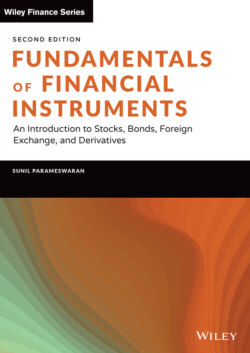Читать книгу Fundamentals of Financial Instruments - Sunil K. Parameswaran - Страница 77
На сайте Литреса книга снята с продажи.
Compound Interest
ОглавлениеLet us take the case of an investment of $P that has been made for N measurement periods. However, we will assume this time that interest is compounded at the end of every year. Notice, we are assuming that the interest conversion period is equal to the measurement period, namely a year. In other words, the quoted rate is equal to the effective rate.
In this case, an original investment of $P will become $P(1 + r) dollars after one period. The difference as compared to the earlier case, however, is that during the second period the entire amount will earn interest and consequently the balance at the end of two periods will be P(1 + r)2. Extending the logic the balance after N periods will be P(1 + r)N. Once again you should note that N need not be an integer.
Thus, the following observations are valid if interest is paid on a compound interest basis.
Every time interest is earned it is automatically reinvested at the same rate for the next conversion period.
Interest is paid on the accumulated value at the start of the conversion period and not on the original principal.
The interest earned every period will not be a constant but will steadily increase.
